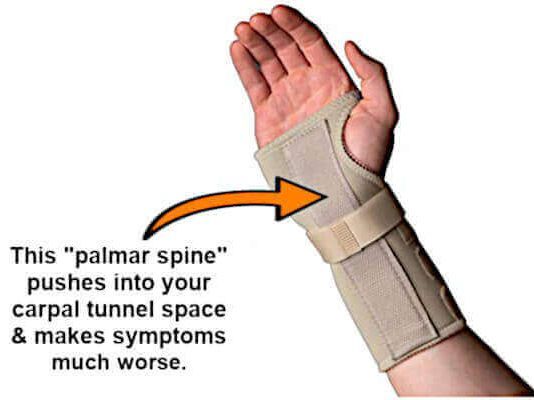Never wear a wrist brace while working if you have carpal tunnel syndrome. Only wear it while you sleep. Doing so will prevent your wrist from over-bending. Over-bending your wrist will increase pressure on the median nerve. And that makes the problem much worse.
Choosing the Right Carpal Tunnel Wrist Brace for Hairdressers
From Dr. Z - Carpal tunnel syndrome specialist
Choosing the Right Carpal Tunnel Wrist Brace for Hairdressers
Table of Contents
- Overview
- When and which brace to wear
- Wrist movement promotes fluid drainage!
- The wrong kind of brace
- The right kind of brace
- Summary
- FAQs
- About
Overview
If you're a hairstylist experiencing hand pain, numbness, or weakness, there’s a good chance you’re dealing with carpal tunnel symptoms. Because your job requires extensive gripping, shearing, and repetitive thumb motion, your profession puts you at three times greater risk than the average worker.
Many believe that any wrist brace will help—but that’s not true. To protect your hands properly, you need the right brace, and you need to wear it at the right times. Read below to understand why.
The Best and Worst Carpal Tunnel Braces
- Think you have carpal tunnel? Complimentary self-test
- Already know you have carpal tunnel?
This Quiz tells you its severity
When and which brace to wear
To keep carpal tunnel symptoms from worsening:
- Never wear a brace during the workday.
- Always wear a certified night brace while sleeping.
- Use a brace designed specifically for carpal tunnel—don’t settle for generic models.
Be cautious of common braces sold at pharmacies. Many feature a “palmar spine” (a rigid metal strip) on the palm side. If your wrist bends backward in sleep, that spine can press into your wrist and increase pressure on the median nerve—making symptoms worse.
A certified carpal tunnel night brace places its rigid supports on the top or sides of the hand—not on the palm—so even if your wrist moves in sleep, it won’t aggravate the nerve.

Wrist movement promotes fluid drainage!
Sure, it might hurt to move you hand a lot with carpal tunnel. And a brace keeps you from making sharp movements. But you MUST move your hand. Movement is the only way excess fluid can be pumped out of your wrist joint. And movement will also increase blood flow, which is crucial to the haling process.
Keeping your hand immobile will cause more fluid buildup. And that’s not good for carpal tunnel syndrome. Therefore, when you have carpal tunnel it’s much better to NOT wear a wrist brace while you work. Instead, give your hand the freedom to move and go through its range of motions so fluid can drain out. Sure, it may hurt a bit more, but it must be done so your hand can heal.
The wrong kind of brace
The right kind of brace
Summary
There’s no magic in a carpal tunnel wrist brace—what matters is using the right design, at the right time. For hairdressers and others who stress their hands daily, it's crucial to avoid wearing a brace during active use. Instead, invest in a certified night brace that protects your wrist while you sleep, without risking further nerve compression. Wearing the wrong brace—or using it all day—can make carpal tunnel symptoms worse, not better.
FAQs
Q1: Should I wear a wrist brace while working as a hairdresser?
No — wearing a brace during your workday can actually trap fluid in your wrist and worsen pressure on the median nerve. Movement helps drain fluid out of the wrist joint, so it’s best to reserve bracing for times when your hand is at rest.
CarpalRx
Q2: When and why should I wear a brace instead?
You should wear a certified carpal tunnel night brace while sleeping. It prevents over-bending of the wrist, which can increase pressure on the median nerve, without applying undue force from the palm side.
CarpalRx
Q3: What makes a wrist brace “certified” for carpal tunnel — and why is that important?
A certified carpal tunnel brace doesn’t place its rigid support (or “spine”) on the palm. Instead, supports should sit on the top or sides of the hand. Braces with palmar spines can press on the wrist during sleep and make symptoms worse.





